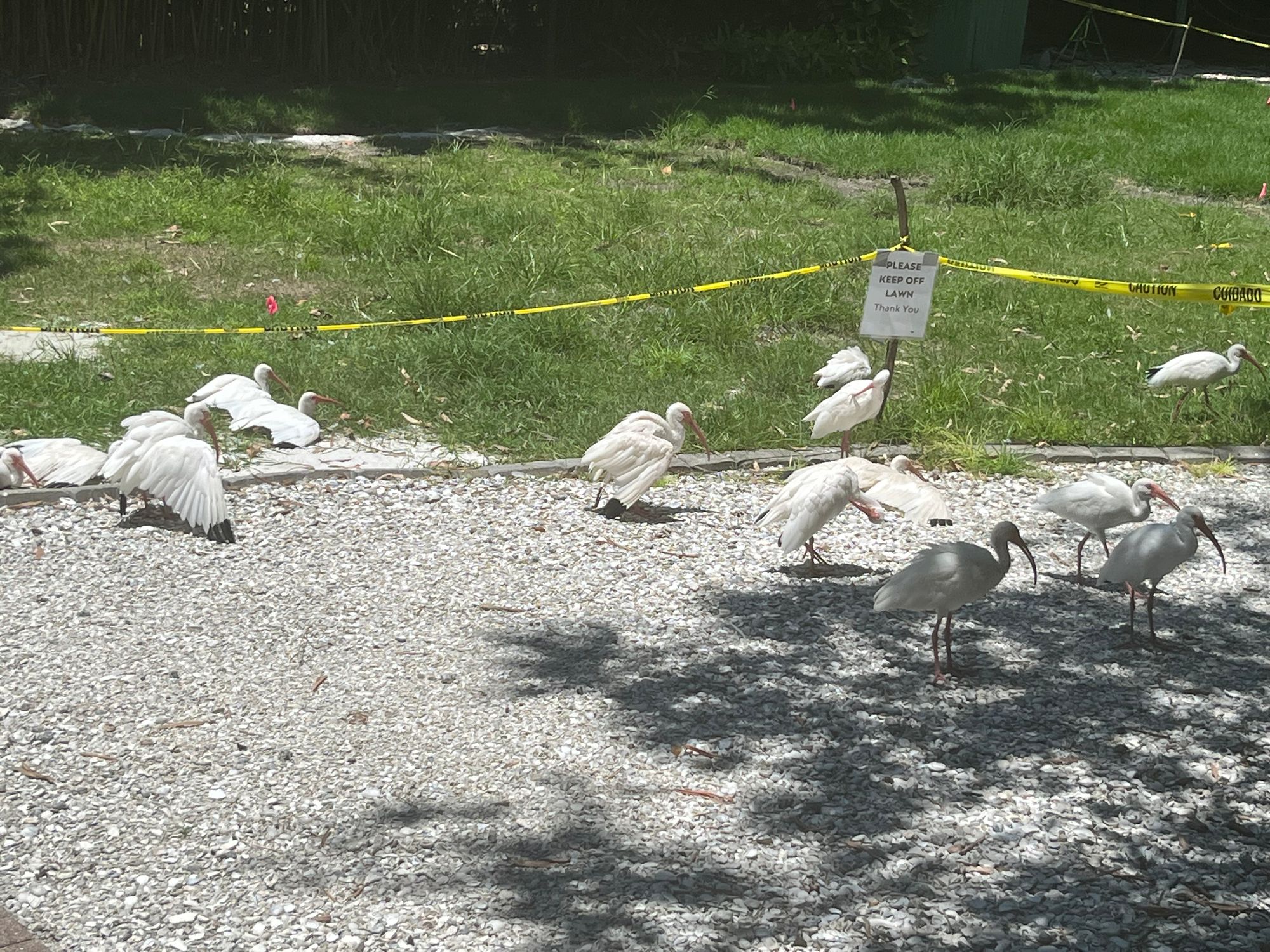
What excites you about the natural world? I want you to think about that for a minute. What is the sort of thing that you might see or hear that would get your blood pumping and your excitement building? For me, it’s the opportunity to witness something I’ve never noticed before and think about what it means. I’ve taken to calling these epiphanies ‘ah-ha’ moments, and sharing them with like-minded people has become one of my goals.
Recently, I was able to experience one of these and now I get to pass it on. At first glance, it didn’t seem like anything special, just a flock of white ibis, Eudocimus albus, hanging around an open area. Then I noticed several individuals were doing something I never seen before, at least not in an ibis. They were extending their wings out. A few were even hunkering down on the ground. The photo above is the one I took from closer range.
While I can’t be certain, I have a couple of guesses to explain what I saw. When I initially noticed the behavior, it reminded me of a larger bird with a similar feeding method, the wood stork, Mycteria americana. Both birds are tactile rather than visual feeders (meaning they close their bills in reaction to a sense of touch instead of looking for prey). I have seen wood storks extend their wings when foraging like the one below. This creates shade, making the area near them more attractive for large fish.

However, while ibis can and do forage in shallow water, this flock was on land. I’m not sure whether shade would be that helpful in attracting prey in such a case. I also didn’t see a lot of bill probing of the ground, a distinguishing characteristic of ibis foraging. However, as I got closer, I began to notice the hunkering behavior I mentioned. You can see several individuals in that picture spreading themselves on the ground. After some thought, it occurred to me that the ibis might be taking a dust bath.
To modern humans, the concept of a dust or sand bath might seem a bit silly: all it does is get you dirtier. However, they do have a purpose. For one thing, dust baths are likely more efficient at removing ectoparasites (parasitic organisms living on the skin, fur, or feathers) than bathing in water. Some mammals can also use it as a means of marking territory by leaving chemical signals on the ground.
So, if that is what I saw, why did I feel excited? White ibis are everywhere in South Florida. Dust bathing is relatively common. The reason it’s special to me is because I’d never seen the exact combination before. Many nature hobbyists keep ‘life lists’ of species they have personally observed. This is especially true of birders. I have nothing against such pursuits, but it’s not for me. Tracking down rare or hard to spot species can give a thrill to some, but I’ve always found more joy in observing behavior in relation to the environment. What’s important is that there is no ‘right’ or ‘wrong’ way to enjoy nature, so long as you treat it with respect.
What Can You Do?
How can you tell what will drive your interest in the natural world?
- Start small and be patient. I have always had an interest in nature, but refining it and understanding my own interests has been a continuous process over years. Keep an open mind and don’t worry about figuring out what you find interesting right away.
- Look for tools that can help you. Modern technology has made amateur naturalism easier than ever. For example, the Merlin Bird ID App created by the Cornell Lab of Ornithology is an excellent resource for learning more about your local birds.
- Cultivate your interest in your local community. You are not alone. Ask around and find other who share your particular interests. You can help each other in your explorations.